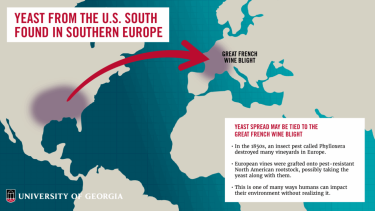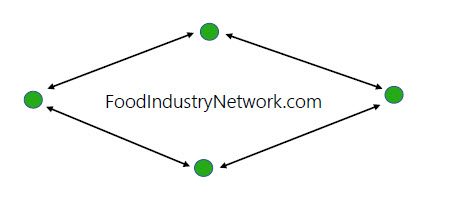Clear link discovered between baker’s yeast evolution and early human migration

Scientists link baker’s yeast evolution to ancient human movements, suggesting we’ve been shaping microbial life far longer than imagined.


New research from the University of Georgia (UGA) has uncovered compelling genetic evidence that baker’s yeast, an essential ingredient in bread and alcohol production, may have travelled the globe alongside early human populations.
The study, published in Molecular Ecology, suggests that yeast evolution has been profoundly shaped by human migration patterns dating back to the last ice age.
Using DNA analysis, researchers traced links between wild yeast strains found in tree bark and domesticated varieties used in baking and brewing. By comparing samples from Europe, the southeastern US and publicly available global data, they uncovered surprising genetic similarities and a fascinating story of microbial hitchhiking through history.
Jacqueline Peña, lead author and Ph.D. candidate at UGA’s Department of Plant Biology explained:
We are seeing distinct subpopulations within continents. And we’re seeing that, even though we had originally thought that these wild populations would be different, it seems as though they’re not completely separated from human activity.”
The yeast species Saccharomyces cerevisiae has been used by humans for millennia, with domestication dating back to around 7000 BCE. However, until recently, its wild cousins, found living naturally on tree bark, were thought to be genetically distant. The study reveals otherwise.
Dr Douda Bensasson, corresponding author and associate professor at UGA’s Franklin College of Arts and Sciences added:
We were expecting that there would be ancient divergences and that the forest yeast would’ve had nothing to do with humans this whole time. But to our surprise, we found that it roughly coincided with the last ice age, which is around the time that humans were starting to grow their own food and spreading farming around the world.”
Traces back to Great French Wine Blight


Infographic on global yeast spread. Credit: University of Georgia
In a particularly unexpected twist, the team discovered that yeast from the winemaking regions of southern Europe bore striking resemblance to yeast found in the southern United States. The researchers believe the transatlantic link may trace back to the 19th century during the Great French Wine Blight. At the time, European growers imported American vines to combat a devastating insect infestation, inadvertently bringing along their microbes.
Peña described this phenomenon as a “unique duality” — wild and domestic strains of yeast existing separately yet influenced by the same human forces.
Samples were collected from tree bark, including some from UGA’s own campus, and then grown and genetically analysed using fermentation-style techniques. The results paint a complex picture of yeast’s evolutionary journey, entangled with human development, agriculture and global trade.
Are humans unknowingly altering microbial ecosystems?
The findings raise broader concerns about how much humans may be unknowingly altering microbial ecosystems today.
Bensasson warned:
If humans, without intending to, were moving microbes around thousands of years ago, just think about all the stuff that we are doing now. We may be changing all kinds of things without knowing it. And I don’t know if that’s good or bad, but it’s a little worrying that we have no idea what we’re doing.”
The study, co-authored by Eduardo Scopel and Audrey Ward, highlights how even the smallest organisms can tell the biggest stories about human history.
Source: newfoodmagazine.com

